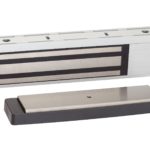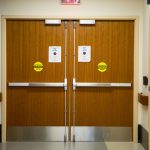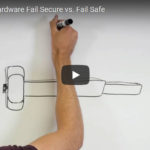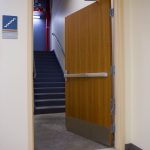5C – Electromagnetic Locks
Most types of latching hardware - including electromechanical locks - allow free egress in a similar fashion to standard mechanical hardware; turn the lever or push the touchpad, and the latch retracts. Electromagnetic locks do not function this way, so additional release devices are required in order to allow building occupants to exit by removing power from the mag-lock to break the electromagnetic bond.






